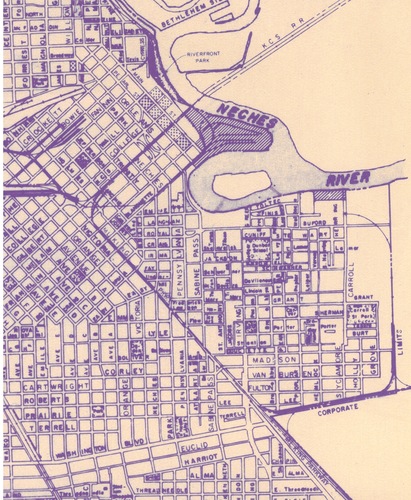.JPG) Beaumont held a Deep Water Festival in 1924
Beaumont held a Deep Water Festival in 1924By Judith Linsley
Early Beaumont leaders, conscious of the need to instill civic pride and bring in visitors and revenue, pushed for seasonal celebrations. The springtime Strawberry Festival, held in the 1880s, was succeeded by the Rice Festival, initiated in the fall of 1900. The Rice Festival morphed into the South Texas State Fair, and by the 1920s it was a rousing success; Beaumonters wanted an equivalent event in the spring.
In January 1924 the Young Men's Business League, sponsor of the Fair, announced that it would hold a "big spring festival" in March. The event needed a name, however, and the Beaumont Journal offered $10 in gold to the winner of a naming contest.
Thirty names were considered, among them "Neches Jubilee," "Beaumont Spring Carnival," "Magnolia Festival," "Beaumont Spring Frolic," "Prince of Port Pageants," "Sports of the Queen of Ports," "Call of the Sea Gulls," and "Mont-Beau Jubilee." The name committee chose "Beaumont Deep Water Festival," submitted by Mrs. Mary Ashley of the Rosenthal Dry Goods Company.
Two locations for the festival were under consideration: Pipkin Park and "the island in the turning basin." (The island had originally been a big meander in the Neches River and was Orange County land. When the ship channel was cut across it, the land became an island-Harbor Island-and was part of Jefferson County. In the 1970s, the river bend was filled in with dirt from the island and the newly connected area became part of the Port of Beaumont.)
Organizers decided to have the festival at Pipkin Park, but used the island for the nightly "monster fireworks spectacles," described as "the largest and most picturesque ever given here."
The festival opened on Wednesday, March 5. Except for an occasional shower the first day, the weather cooperated. The U.S. destroyer Marcus and the steamship Nicholaus were at the municipal docks, and the Poole Carnival company had set up its midway at Pipkin Park.
Crowds visited the midway and inspected the Marcus, and the Nicholaus took groups on short river excursions. During the carnival, two seaplanes from the U.S. Omaha, a cruiser docked at Galveston, landed on the river, to the delight of hundreds of spectators.
March 8, the last night of the carnival, was "Joy Night." Costumed celebrants paraded from the corner of Pearl Street and Calder Avenue down Pearl, ending at Pipkin Park. Prizes were given for best costumes: $10 for the best couple's outfit, $7.50 for the best ladies' costume, and $5 for the best men's costume. Officers of the Marcus helped with judging.
The Monday after the festival, the Marcus steamed toward the Atlantic Ocean for a series of "war games." Both Beaumonters and sailors on board ship said goodbye regretfully, and the commander expressed hope that one day he would be ordered to return to Beaumont.
The Deep Water Carnival was declared a success, but it wasn't repeated. Beaumont didn't have a permanent spring festival until the Neches River Festival was organized in 1949.
